The Gospel of Thomas
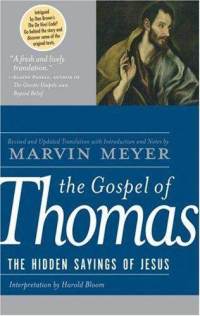
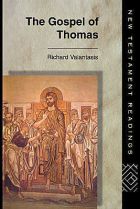
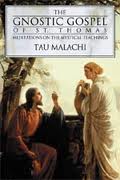
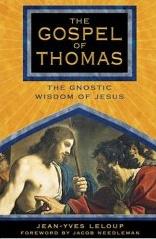
FOREWORD
"Among all the astonishing documents accidentally—or fatefully— unearthed in 1945 near the desert village of Nag Hammadi in Upper Egypt, the Gospel of Thomas has made the greatest impact on our understanding of Christianity. The first English rendering of this text was published in 1959 and was greeted with intense interest by scholars and theologians alike. But the impact of this document was soon felt far beyond the circles of specialists, almost as though an audible recording of the voice of Jesus had been discovered. That is to say that even across the reaches of millennial time and even through the curtain of translation from languages known to but a few, for many of us the words in this text have the power to touch an unknown part of ourselves that brings with it an undeniable recognition of truth and hope. When it was said of Jesus, by those who were at first bewildered by him, that he spoke "as one having authority," what is surely meant is that he and his teaching authenticated itself by their power to awaken that same hidden, selfauthenticating part of the human heart and mind.
Here we have the key to approaching the fundamental category that scholars and theologians have applied to this document and those like it—the technical term gnosticism. It is a word that in fact points to something of great importance to our understanding of all the spiritual traditions of the world and, as such, of great importance to our understanding of human life itself.
When scholars apply the label gnostic to the documents found at Nag Hammadi, they are generally assigning them to the current of religious doctrines and practices that flourished in the early centuries of the Christian era and were condemned as heresy in a movement spearheaded in the second century by the redoubtable bishop of Lyons, Irenaeus. The eventual result of this condemnation was the widespread suppression of these heresies and the relentless destruction of their constitutive texts. Until now, most of what was known of these teachings was based on the adversarial accounts of them provided in Irenaeus's vastly influential work, Against the Heresies. The immense historical significance of the Nag Hammadi documents consists in the likelihood that they were buried by members of some of these communities in order to preserve them from the storm of the ecclesiastical book burning of the time. Thus, nearly two thousand years after the suppression of these so-called heresies, we now suddenly have the opportunity to look directly at aspects of their teachings instead of seeing them largely through the eyes of their enemies.
But although the texts themselves can now be directly seen for the first time in nearly two thousand years, really to see them is a task that invites us to something much more demanding and joyous than simply reading them off the pages of ancient scrolls or modern translations and interpreting them according to familiar habits of intellectual analysis.
It is not for nothing that in this document the very first words of Jesus, here called by the Aramaic name Yeshua, are these: "Whoever lives the interpretation of these words will no longer taste death.” Is this merely a figure of speech? Or do these words speak to some kind of knowledge and knowing that have an action upon the very flesh and blood of a human being, an action that is incomparably more penetrating than anything we call "knowledge" or "knowing"—including even our inspired moments of intellectual insight or passionate realization? Is there some kind of knowing that can transform our being to the point—dare we imagine—of bringing forth a life that does not die when the body dies? Such knowing as this is inseparable from the action of faith—considered not simply as a set of emotionally charged beliefs, but as a movement within the human psyche that generates a magnetic current flowing between our individual human life and the source of human life itself; and that deposits into our human life the spiritualized matter of what is called the "new Adam"; and that enables a man or woman actually to answer in an entirely new way the great cry of St. Paul: "For the good that I would, that I do not; and that which I hate, that do I," or, in other words, to answer with the actions of love rather than with brittle promises of future virtue. Such transformational knowing actually has little or nothing to do with what we ordinarily call thought. It has to do with energy, the energy of consciousness. This energy is at the heart of what is signified by the ancient word gnosis, from which gnosticism is derived.
In applying the term gnosticism to these teachings, scholars and theologians understandably call our attention to the emphasis that most of the Nag Hammadi documents place on the role of knowledge in the religious life—in apparent contrast to the demand for faith that became the central tenet of the Church over the centuries, especially in the West. There are numerous other doctrines that are sometimes identified with gnosticism—such as its apparent metaphysical dualism and condemnation of the world. But it is the notion of gnosis as transformational knowing that is of utmost importance and that cries out for deeper inquiry in the world we now live in, a world—a civilization—which is deeply, perhaps fatally, afflicted with an ever-widening disconnect between what we know with the mind and what we know in our heart and in our instincts.
Both in our civilization and in our personal lives, the growth of knowledge far outstrips the growth of being, endlessly complicating our existence and taking away from us far more than it gives us. In relation to the advances and applications of scientific knowledge, we are like children restlessly sitting at the controls of a locomotive. Without a corresponding growth of inner, moral power, our intellectual power seems now to be carrying us toward disaster—in the form of the catastrophic destruction of the natural world, in the decay of ethical values, in the secrets of biological life falling under the sway of blind commerce or blind superstition, and above all, in the impending worldwide nuclear terror. May we not therefore say, as Plato said 2,500 years ago, that such "knowledge" as we have does not really deserve the label knowledge? Can we listen to him as he tells us that knowledge without virtue can neither bring us good nor show us truth? This is to say that such knowing as we have is not transformational; it does not elevate our level of being and it does not nourish the development of moral power.
It is only the fully developed human being, which means only the Foreword viii fully developed human mind in which the intuition of objective value is an essential component, that can see the world as it really is, and that, through its action upon our instincts and impulses, can lead us toward the capability to act in the service of the Good.
The present text is offered to us by Jean-Yves Leloup not so much as a commentary on these words of Jesus, but "as a meditation that arises from the tilled earth of our silence.” I take this to mean that it is through the author's own inner opening toward the Self that his scholarly and theological skills take their ultimate direction in translating and interpreting what he rightly calls "this sublime jewel of a gospel.” In other words, there may be, and I believe there are, two kinds or levels of knowing operating in this book. On one level, the visible level of words and concepts, there are the insights and explanations that will help every serious reader think in a new way about the meaning of the teaching of Jesus, a way that does not in any way deny the greatness of Christian doctrine that has brought comfort to countless millions of men and women throughout the ages. But for Leloup, this kind of knowing about the Christian religion, precious as it is, is secondary to a deeper kind given through the grace that is the fruit of the inner work of meditation.
And what words can characterize passage to this deeper level of knowing? Leloup puts it this way: "There exists a relative consciousness formed and acquired through readings, encounters, and the thoughts of others.” And he goes on to say: "But there is also a consciousness that arises directly from knowledge of ourselves, of the ”;Living One' within us. It is toward this consciousness, this gnosis, that Yeshua invites us in the Gospel of Thomas—not in order to become ”;good Christians,' but to become christs—in other words, gnostics, or awakened human beings.” This deeper knowing may properly be called pure consciousness—or, perhaps more precisely, the pure energy of consciousness. It is an energy, no doubt itself existing at many levels, that can be allowed to descend into the body, heart, and mind and, through its own active force, make of us the being called anthropos, the awakened, fully human being.
This energy is not what we ordinarily call thought. But it is this energy that has the power to do what we have wrongly imagined our ordinary Foreword ix thought can do: It can direct all our functions, including our mental thought. This book, therefore—as is true of Jean-Yves Leloup's presentations of the Gospel of Mary and the Gospel of Philip (which are also gnostic texts)—is in itself a step toward the work of the mind that desperately needs to be rediscovered in our era. The proper work of the mind is to function at two levels, the level of silence and the level of expression. And it is expression that is secondary—that is, truth in the form of words and formulations can come only out of silence, the state of the pure energy of consciousness anterior to its assumption of forms; words; ideas; associations; the organization of impressions, images, programs . . .
The mind alone—the mind that is not nourished by the silence of the fertile void of pure Being—as such is incapable of guiding human life. The ordinary, isolated intellect, no matter how brilliant or inspired, has not the energy to command our thoughts, words, impulses, memories and experiences in a way that conforms to truth and the Good. This, in sum, is the tragedy of our era, of our knowledge in the modern world. All that science has brought us—the phenomenal, wondrous discoveries it has brought us about life, matter and the universe—will eventually bring us nothing but destruction because we have forgotten that the mind alone cannot direct itself or the whole of ourselves. It does not have the energy for this. It is an energy that must come from another, higher level within the human psyche, a level that is experienced as silence.
Whatever we wish to call it, then—gnosticism, esotericism, mysticism, each in its authentic rather than imitative form—spiritual work has to do with energy rather than solely with what we call thought. Gnosis is a force, not just a set of ideas, symbols, or concepts. To the extent that we render our religious or moral teachings only in words, no matter how beautiful or systematic, we are bound to become the prey of academicism, dogmatism, or fanaticism. What our modern world has suffered from most of all is runaway ideology, the agitated attachment to ideas that thereby become the playthings of infrahuman energies. This is the great danger of all ideologies, whether political, religious, or academic.
"Is it possible," Leloup asks, "to read these logia [these sayings of Yeshua] in a way that allows them to make their way into the mind and the heart of our humanity, leading us into a voyage of transformation, Foreword x toward a full realization of our being?” Within this question lie both the effort and the reward, the demand and the gift, offered by this and all truly sacred writings. What would it mean to attend to our inner state of being even as we try with all our might to grasp the meaning of these sayings— alone in our room or in our exchanges with companions and colleagues or, for that matter, in our inner confrontations with all the views that we may have previously taken as the sole truth? What would it bring to us now to keep a quiet mind alongside the passionate commitment to independent thought that once brought such hope to our modern world? "It is my belief," Leloup concludes, "that it is from this ground [of inner silence], rather than from mental agitation, that these words [of Yeshua] can bear their fruit of light.”
JACOB NEEDLEMAN,
DEPARTMENT OF PHILOSOPHY,
SAN FRANCISCO STATE UNIVERSITY, AND AUTHOR OF LOST CHRISTIANITY AND THE AMERICAN SOUL
Were the Four Gospels Written by the People Whose Names They Bear ... Matthew, Mark, Luke and John?

"People often defend the view that the Gospels were written by the people whose names are associated with them today. The justification is that the early theologians in the Church, called "The Fathers of the Church," didn't ever speculate about who wrote the Gospels but accepted the names of the authors they traditionally bore.
However, that notion is true only of the Church Fathers from about the middle of the second century onwards. The early Fathers of the Church do not refer to the four Gospels by the names they have today. They treat them as anonymous documents with no authors' names attached to them. It looks like the names of the authors began to be associated with particular Gospel texts only about the middle of the second century.
The standard belief, according to Church tradition, is that the four Gospels were written by Matthew, Mark, Luke and John. Matthew was a tax collector. Mark was the secretary of Peter and was with him in Rome before Peter was executed. Luke was a disciple of Paul. Only Matthew and John were two of the twelve Apostles. Luke never met Jesus. Paul never met Jesus, pace that incident on the road to Damascus. Unfortunately, the evidence just doesn't support the view that these four named individuals wrote the Gospels.
When trying to discover who is the author of a book like any of the New Testament writings, the most obvious place to look is within the texts themselves. Does the author of any Gospel refer to himself by name? Does he refer to some incidents or events that he witnessed that would tie his name to the Gospel as its author? The answer to both questions is "No.”
Secondly, we could look at what evidence comes from outside the texts. Do other contemporary authors refer to the author of the work? And what information can we gather about the alleged author's life from other sources?
The first thing to note about the four Gospels of the New Testament, which are our primary witnesses for what Jesus actually was and said and did, as opposed to the Jesus we have been traditionally served up, is that they do not claim Matthew, Mark, Luke and John to be their authors. The term they use is "Kata…" Kata Matthaion, Kata Ioannen, etc.
"Kata" is a Greek term which denotes "handed down from" or "according to". In other words, what the phrase means is: "The Gospel according to Matthew, according to John, etc.” The very titles themselves are saying unequivocally that these four named people did not themselves write the documents. It was their tradition that was picked up and revered, and put down in writing by others.
We need to be clear that whoever placed these titles on the Gospels in the middle of the second century was not trying to convey that Matthew, Mark, Luke and John were the authors. (p.318) Instead, by their choice of phrasing, they were intending to convey that Matthew, Mark, Luke and John were NOT the authors. The actual authors of the Four Gospels most likely had never witnessed the life of Jesus or any of the incidents that were described in their texts.
As already noted, the original autograph copy of none of the Gospels of the New Testament has survived, so we can't go there for help. In fact, it is not even clear that there was any single recognized title for any of the four Gospels originally. What we find is that in thousands of manuscripts there is a wide variety of titles given to them. Scholars have therefore concluded that there wasn't any single original title on any of the Gospels but that the names were added by later scribes.”
Saving Jesus - The Evidence for Jesus and History's Impact on it
Miceal Ledwith, Edessa Code, LLC, USA (November 4, 2017) p. 316-318
Note:
[228] Eminent theologians who laid the scholarly foundations of Christianity in the early centuries. That title is normally applied to individuals who lived before about 700 A. D.
"The four Gospels... are all anonymous, written in the third person about Jesus and his companions. None of them contains a first-person narrative ("One day, when Jesus and I went into Capernaum...”), or claims to be written by an eyewitness or companion of an eyewitness. Why then do we call them Matthew, Mark, Luke and John? Because sometime in the second century, when proto-orthodox Christians recognized the need for apostolic authorities, they attributed these books to apostles (Matthew and John) and close companions of apostles (Mark, the secretary of Peter; and Luke, the travelling companion of Paul). Most scholars today have abandoned these identifications, and recognize that the books were written by otherwise unknown but relatively well-educated Greek-speaking (and writing) Christians during the second half of the first century.”
"Lost Christianities" by Bart Ehrman (2003)
"Justin Martyr, writing around 150-60 CE, quotes verses from the Gospels, but does not indicate what the Gospels were named. For Justin, these books are simply known, collectively, as the 'Memoires of the Apostles.' It was about a century after the Gospels had been originally put in circulation that they were definitively named Matthew, Mark, Luke, and John. This comes, for the first time, in the writings of the church father and heresiologist Irenaeus, around 180-85 CE.”
"Forged" by Bart Ehrman (2011)3
Ehrman kindly points out that the gospels were not forgeries - they were anonymous, and it was a case of false attribution8 by Christians later on that was the cause of the misdirection which lasted many hundreds of years.
What's Up with the Gospel of Thomas?
"The type of religiosity found in the Gospel of Thomas is not all that unusual. You can find references to it in Biblical and non-biblical literature. It is nothing more than an early Christian expression of mysticism that developed out of an earlier, apocalyptically oriented Christianity that wished for the immediate end of the world. When the end didn't happen, the Christians were forced to rethink and rewrite their cherished apocalyptic teachings.”
What's Up with the Gospel of Thomas?
By Dr. April D. DeConick
New manuscript discoveries continually expand our knowledge of what
was actually going on in antiquity. The accommodation of this new
knowledge can sometimes require us to create new histories. Yet as a
Biblical scholar, I am constantly faced with the fact that our old
academic models die hard. Why? Because there is a general resistance
to changing previous understandings of the Bible based on the
discovery of "new" nonbiblical manuscripts. For one thing, the
religious view that the Bible is old, trustworthy and sacred has
become a cultural icon in our society. Second, not only are believers
invested in maintaining traditional faith, but scholars are invested
in maintaining their previous academic opinions.
I have noticed that new manuscript discoveries are often labeled in a
way that diminishes their importance, both in religious communities
and in the academy. Scholars determine that these manuscripts "post-
date" the Bible, allowing them to be tabled. They are called
"Gnostic," by which these scholars mean that they were written
by "heretics" who corrupted the scripture and were purged from the
Church because they refused to worship the creator god YHWH and
instead turned to pay homage to the "one god" who they believed
existed beyond the universe. They are thought of as "forgeries," a
legal term that identifies their authors as criminals who falsely
assumed apostolic identities. What this might mean for 2
Thessalonians, Colossians or Ephesians (all claiming Paul's
authorship but likely not written by Paul) rarely crosses our minds,
because Biblical letters can't be forgeries. They are
either "anonymous" or "pseudonymous.”
Largely because of this resistance, it can take scholars decades to
figure out what a manuscript means and put in place a new model that
makes sense of the new evidence. It can take even longer for this new
model to become common knowledge, distributed outside the academy.
A case in point is the Gospel of Thomas. It was one of more than 50
texts that were discovered in 1945 by Bedouin in the Egyptian desert
and came to be known as the Nag Hammadi codices.b Unlike the
canonical gospels, it does not contain a narrative of Jesus' life and
ministry but rather is a collection of Jesus' sayings, some of which
are also recorded in the canonical gospels. It was immediately
labeled Gnostic, late, secondary, Biblically dependent and
inauthentic. Just as old models die hard, so, too, do first
impressions last; today, if you open up almost any general book on
the Gospel of Thomas, you will see that this is how it is still
described. Yet during the intervening 50 years since it was first
published, we have worked very hard to understand this text. We
struggled with the Gnostic label for a long time until we realized
that the Gnostics weren't a single group and that the Gospel of
Thomas represents none of the various types that did exist (Sethian,
Valentinian or any other Gnostic Christian community) because it
lacks references to distinctive Gnostic mythologies, including the
hallmark feature that the God of worship is not the creator god YHWH,
but a god beyond our universe.
If it isn't Gnostic, then how do we explain the fact that the text
has an esoteric orientation, is pro-celibacy, demands that the
faithful remain unmarried, and favors a view of the end of the world
as "realized" (as many Gnostic texts do)? The Kingdom and the New
World are not events of the future, but have already come without
anyone noticing.1 So the disciples ask Jesus, "When will the dead
rest, and when will the new world come?”Jesus replies," What you
look for has come, but you have not perceived it" (Thomas 51).2 As in
the Gospel of John, Jesus has already cast the fires of judgment upon
the world.3 Jesus demands that his followers seek visions of God
before their deaths in order to have immortality, saying, "Gaze upon
the Living One while you are alive, in case you die and (then) seek
to see him, and you will not be able to see (him)" (Thomas 59).
Believers will not see Jesus coming with the clouds, as was taught by
other Christians. Rather, he would appear to those who remake
themselves as children—unafraid and shameless:
His disciples said, "When will you appear to us? When will we see
you?” Jesus said, "When you strip naked without shame, take your
garments, put them under your feet like little children, and trample
on them. Then [you will see] the Son of the Living One and you will
not be afraid" (Thomas 37).
This teaching invokes the Genesis story in which Adam was viewed as a
child before the Fall. In the Gospel of Thomas, to return to the
garden as a primordial Adam meant that you had to renounce your body
and embrace celibacy. The ideal state necessary for visions of Jesus
is a retooled state of the individual, not of the cosmos.
The type of religiosity found in the Gospel of Thomas is not all that
unusual. You can find references to it in Biblical and non-biblical
literature. It is nothing more than an early Christian expression of
mysticism that developed out of an earlier, apocalyptically oriented
Christianity that wished for the immediate end of the world. When the
end didn't happen, the Christians were forced to rethink and rewrite
their cherished apocalyptic teachings.
Texts like Luke-Acts (Acts 1: 6-8) show us that some Christians chose
to delay the end indefinitely by creating a lengthy period of the
church and its ministry before the end would be able to come. Other
texts like Matthew's gospel 924:36) rationalized that the end would
come, but not even the Son knows when. Still others like John and
Thomas collapsed the end into the present, so that the old world
ended with the end of Jesus' life, and the new world began with the
church, which was now experiencing all the promises of the kingdom.
In the case of the Gospel of Thomas, the Christians were trying to
live as they thought they would at the end of time—like the angels in
heaven. So they gave up marriage and sex and believed that their
bodies were already being transformed into the glorified spiritual
bodies of the resurrection. Intimacy with God, visions of Jesus,
equal status with angels, the new world, life-beyond-death were
already theirs.
We can even locate this mystical form of Christianity historically.
It is a form that developed in eastern Syria in the late first and
early second centuries, a form of Christianity that was an heir to
early Jewish mystical traditions and a precursor to later Eastern
Orthodoxy. I think that Thomas' "place" in early Christianity was
misidentified originally not because it represents a type of
Christianity unfamiliar to the canonical tradition or deviant from
it. The Gospel of Thomas was wrongly identified at first because
Western theological interests controlled its interpretation within a
Western Christian framework that could not explain its unfamiliar,
mystical structure. Yet we now know—in part from manuscript
discoveries like the Nag Hammadi collection—that there was a
multiplicity of groups, beliefs and traditions in the diverse early
Christian communities. Scholars who misunderstood the Gospel of
Thomas mislabeled it as Gnostic in order to lump it together with
other traditions they thought to be strange, heretical and late.
Old models die hard, but die they must.
Biblical Archaeology Review (BAR 36:01, Jan/Feb 2010 )
THE APOCALYPSE OF THE SPIRIT-PARACLETE
The fulfillment of the promised divine eschatological instruction

“The Paraclete will come (15:26; 16:7, 8, 13) as Jesus has come into the world (5:43; 16:28; 18:37)... The Paraclete will take the things of Christ (the things that are mine, ek tou emou) and declare them (16:14-15). Bishop Fison describes the humility of the Spirit, 'The true Holy Spirit of God does not advertise Herself: She effaces Herself and advertises Jesus.' ...
It is by the outgoing activity of the Spirit that the divine life communicates itself in and to the creation. The Spirit is God-in-relations. The Paraclete is the divine self-expression which will be and abide with you, and be in you (14:16-17). The Spirit's work is described in terms of utterance: teach you, didasko (14:26), remind you, hypomimnesko (14:26), testify, martyro (15:26), prove wrong, elencho (16:8), guide into truth, hodego (16:13), speak, laleo (16:13, twice), declare, anangello (16:13, 14, 15). The johannine terms describe verbal actions which intend a response in others who will receive (lambano), see (theoreo), or know (ginosko) the Spirit. Such speech-terms link the Spirit with the divine Word. The Spirit's initiatives imply God's personal engagement with humanity. The Spirit comes to be with others; the teaching Spirit implies a community of learners; forgetful persons need a prompter to remind them; one testifies expecting heed to be paid; one speaks and declares in order to be heard. The articulate Spirit is the correlative of the listening, Spirit-informed community.
The final Paraclete passage closes with a threefold repetition of the verb she will declare (anangello), 16:13-15. The Spirit will declare the things that are to come (v.13), and she will declare what is Christ's (vv. 14, 15). The things of Christ are a message that must be heralded...
The intention of the Spirit of truth is the restoration of an alienated, deceived humanity... The teaching role of the Paraclete tends to be remembered as a major emphasis of the Farewell Discourses, yet only 14:26 says She will teach you all things. (Teaching is, however, implied when 16:13-15 says that the Spirit will guide you into all truth, and will speak and declare.) Franz Mussner remarks that the word used in 14:26, didaskein, "means literally 'teach, instruct,' but in John it nearly always means to reveal.” (Stevick 2011, 292-7)
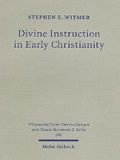
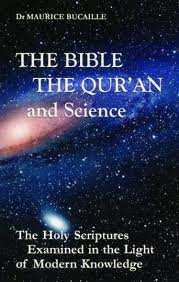
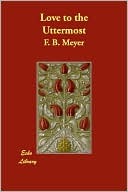
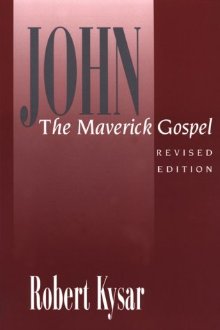
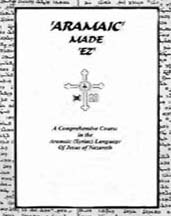
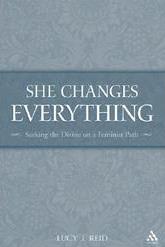
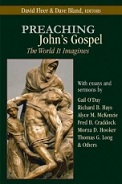

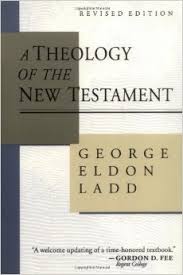
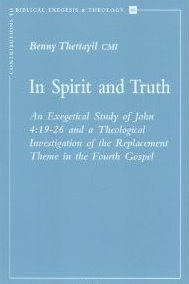


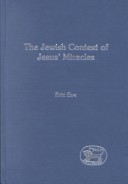
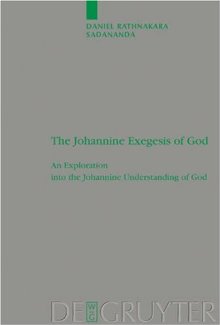

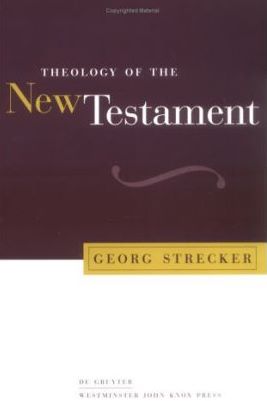
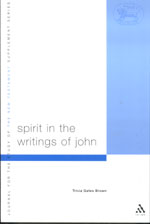
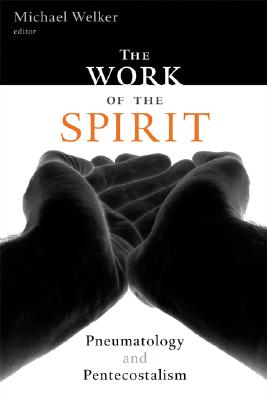
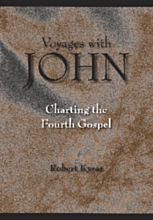


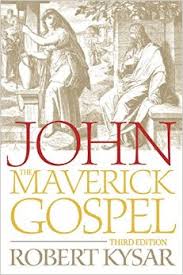
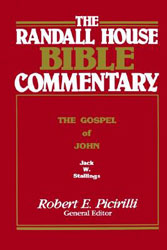

Stephen E. Witmer, Divine instruction in Early Christianity
“Jesus therefore predicts that God will later send a human being to Earth to take up the role defined by John .i.e. to be a prophet who hears God's words and repeats his message to man.”
M. Bucaille, The Bible, the Qur'n, and Science
“And when Jesus foreannounced another Comforter, He must have intended a Person as distinct and helpful as He had been.”
F. B. Meyer, Love to the Utmost
“The Paraclete has a twofold function: to communicate Christ to believers and, to put the world on trial.”
Robert Kysar, John The Meverick Gospel
“But She—the Spirit, the Paraclete...—will teach you everything.”
Danny Mahar, Aramaic Made EZ)
“Grammatical nonsense but evidence of the theological desire to defeminize the Divine.”
Lucy Reid, She Changes Everything
“The functions of the Paraclete spelled out in verses 13-15... are all acts of open and bold speaking in the highest degree.”
David Fleer, Preaching John's Gospel
“The reaction of the world to the Paraclete will be much the same as the world's reaction was to Jesus.”
Berard L. Marthaler, The Creed: The Apostolic Faith in Contemporary Theology
Bultmann calls the “coming of the Redeemer an 'eschatological event,' 'the turning-point of the ages.”
G. Ladd, A Theology of the New Testament
“The Paraclete equated with the Holy Spirit, is the only mediator of the word of the exalted Christ.”
Benny Thettayil, In Spirit and Truth
“The divine Paraclete, and no lessor agency, must show the world how wrong it was about him who was in the right.”
Daniel B. Stevick , Jesus and His Own: A Commentary on John 13-17
Stephen Smalley asserts that “The Spirit-Paraclete ... in John's Gospel is understood as personal, indeed, as a person.”
Marianne Thompson, The God of the Gospel of John
“The Messiah will come and the great age of salvation will dawn (for the pious).”
Eric Eve, The Jewish context of Jesus' Miracles
“The remembrance is to relive and re-enact the Christ event, to bring about new eschatological decision in time and space.”
Daniel Rathnakara Sadananda, The Johannine Exegesis of God
“The Spirit acts in such an international situation as the revealer of 'judgment' on the powers that rule the world.”
Michael Welker, God the Spirit
The Paraclete's “Appearance means that sin, righteousness, and judgment will be revealed.”
Georg Strecker, Theology of the New Testament
“While the Spirit-Paraclete is the true broker, the brokers they rely on are impostors.”
T. G. Brown, Spirit in the writings of John
“The pneumatological activity ... of the Paraclete ... may most helpfully be considered in terms of the salvific working of the hidden Spirit.”
Michael Welker, The work of the Spirit
“The pneuma is the peculiar power by which the word becomes the words of eternal life.”
Robert Kysar, Voyages with John
“The gift of peace, therefore, is intimately associated with the gift of the Spirit-Paraclete.”
Francis J. Moloney, The Gospel of John
“This utopian hope, even when modestly expressed, links Jesus and the prophets to a much wider history of human longing.”
Harvey Cox, The Future of Faith
“Because of the presence of the Paraclete in the life of the believer, the blessings of the end-times—the eschaton—are already present.”
Robert Kysar, John
“They are going, by the Holy Spirit's power, to be part of the greatest miracle of all, bringing men to salvation.”
R. Picirilli, The Randall House Bible Commentary
“The Kingdom of God stands as a comprehensive term for all that the messianic salvation included... is something to be sought here and now (Mt. 6:33) and to be received as children receive a gift (Mk. 10:15 = Lk. 18:16-17).”
G. Ladd, A Theology of the New Testament
“But today is the day I declare that I am the one who has to save the humanity. I declare I am the one who is Adishakti, who is the Mother of all the Mothers, who is the Primordial Mother, the Shakti, the desire of God, who has incarnated on this Earth to give its meaning to itself; to this creation, to human beings and I am sure through My Love and patience and My powers I am going to achieve it.
I was the one who was born again and again. But now in my complete form and complete powers I have come on this Earth not only for salvation of human beings, not only for their emancipation, but for granting them the Kingdom of Heaven, the joy, the bliss that your Father wants to bestow upon you.”
THE MOTHER: Messiah-Paraclete-Ruh
December 2, 1979—London, UK
“I am the one about which Christ has talked... I am the Holy Spirit who has incarnated on this Earth for your realization.”
THE MOTHER: Messiah-Paraclete-Ruh
New York, USA—September 30, 1981
“Tell all the nations and tell all the people all over the Great Message that the Time of Resurrection is here. Now, at this time, and that you are capable of doing it.”
THE MOTHER: Messiah-Paraclete-Ruh
Cowley Manor Seminar, UK—July 31, 1982
“This is the transformation that has worked, of which Christ has talked, Mohammed Sahib has talked, everybody has talked about this particular time when people will get transformed.”
THE MOTHER: Messiah-Paraclete-Ruh-Devi
Chistmas Puja, Ganapatipule, India—25 December 1997
“The Resurrection of Christ has to now be collective Resurrection. This is what is Mahayoga. Has to be the collective Resurrection.”
THE MOTHER: Messiah-Paraclete-Ruh-Devi
Easter Puja, London, UK—11 April 1982
“Today, Sahaja Yaga has reached the state of Mahayoga, which is en-masse evolution manifested through it. It is this day’s Yuga Dharma. It is the way the Last Judgement is taking place. Announce it to all the seekers of truth, to all the nations of the world, so that nobody misses the blessings of the divine to achieve their meaning, their absolute, their Spirit.”
THE MOTHER: Messiah-Paraclete-Ruh-Devi
MAHA AVATAR, ISSUE 1, JUL-SEP 1980 (Date and place unknown)
“The main thing that one has to understand is that the time has come for you to get all that is promised in the scriptures, not only in the Bible but all all the scriptures of the world. The time has come today that you have to become a Christian, a Brahmin, a Pir, through your Kundalini awakening only. There is no other way. And that your Last Judgment is also now.”
THE MOTHER: Messiah-Paraclete-Ruh-Devi
“You see, the Holy Ghost is the Mother. When they say about the Holy Ghost, She is the Mother... Now, the principle of Mother is in every, every scripture — has to be there. Now, the Mother's character is that She is the one who is the Womb, She is the one who is the Mother Earth, and She is the one who nourishes you. She nourishes us. You know that. And this Feminine thing in every human being resides as this Kundalini.”
THE MOTHER: Messiah-Paraclete-Ruh-Devi
Radio Interview Oct 01 1983—Santa Cruz, USA
“It is the Mother who can awaken the Kundalini, and that the Kundalini is your own Mother. She is the Holy Ghost within you, the Adi Shakti, and She Herself achieves your transformation. By any talk, by any rationality, by anything, it cannot be done.”
THE MOTHER: Messiah-Paraclete-Ruh-Devi
“She is your pure Mother. She is the Mother who is individually with you. Forget your concepts, and forget your identifications. Please try to understand She is your Mother, waiting for ages to give you your real birth. She is the Holy Ghost within you. She has to give you your realization, and She's just waiting and waiting to do it.”
THE MOTHER: Messiah-Paraclete-Ruh-Devi
Public Program Mar 22 1981—Sydney, Australia
“The Kundalini is your own mother; your individual mother. And She has tape-recorded all your past and your aspirations. Everything! And She rises because She wants to give you your second birth. But She is your individual mother. You don't share Her with anybody else. Yours is a different, somebody else's is different because the tape-recording is different. We say She is the reflection of the Adi Shakti who is called as Holy Ghost in the Bible.”
THE MOTHER: Messiah-Paraclete-Ruh-Devi
Press Conference July 08 1999—London, UK
Disclaimer: Our material may be copied, printed and distributed by referring to this site. This site also contains copyrighted material the use of which has not always been specifically authorized by the copyright owner. We are making such material available to our readers under the education and research provisions of "fair use" in an effort to advance freedom of inquiry for a better understanding of religious, spiritual and inter-faith issues. The material on this site is distributed without profit. If you wish to use copyrighted material for purposes other than "fair use" you must request permission from the copyright owner.